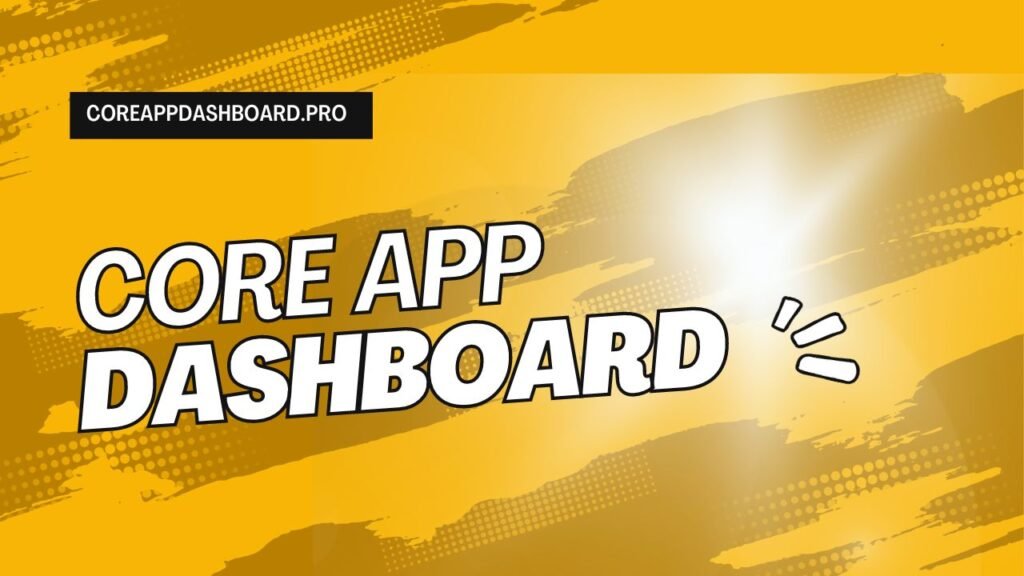In today’s digital age, the core app dashboard stands as a pivotal component in the realm of software applications, serving as the central hub for users to interact with, analyze, and manage data effectively. This comprehensive guide delves deep into the essence of the core app dashboard, exploring its functionalities, benefits, and best practices for optimization, aiming to equip software developers, project managers, and end-users with the knowledge to fully leverage this powerful tool.
The Essence of Core App Dashboards
At its core, a core app dashboard is a user interface that provides a centralized, graphical overview of an application’s key performance indicators (KPIs), metrics, and other critical data. It is designed to offer users a quick snapshot of performance and operational metrics, enabling informed decision-making and efficient navigation through the app’s functionalities. The versatility of dashboards means they can be customized to fit the unique needs of different users, from administrators overseeing system health to marketers tracking engagement metrics.
Key Features and Functionalities
A well-designed core app dashboard encompasses several key features and functionalities that enhance its utility. These include real-time data presentation, customizable widgets and layouts, interactive elements (such as charts and graphs), and integration capabilities with other tools and services. The ability to provide real-time insights is particularly crucial, as it allows users to respond promptly to any changes or anomalies in the data.
Benefits of Implementing a Core App Dashboard
Implementing a core app dashboard offers numerous benefits, contributing significantly to the efficiency and effectiveness of application management.
Enhanced Data Visualization and Accessibility
One of the primary advantages of a core app dashboard is the enhanced data visualization it offers. By presenting complex data in an easily digestible format, dashboards make it simpler for users to understand and analyze information. This accessibility is key to enabling users of all technical backgrounds to make data-driven decisions.
Improved Decision-Making Process
With critical data and metrics readily available, users can make more informed decisions swiftly. This improved decision-making process can lead to better outcomes in various areas such as performance optimization, resource allocation, and strategic planning.
Increased Productivity and Efficiency
By centralizing essential information and tools, a core app dashboard reduces the need for users to navigate through multiple pages or applications to find what they need. This consolidation significantly enhances productivity and operational efficiency, as users can access everything they need from a single location.
Best Practices for Core App Dashboard Design and Implementation
Designing and implementing an effective core app dashboard requires careful consideration of several best practices to ensure it meets the needs of its users and achieves its intended goals.
User-Centric Design
The design of a core app dashboard should be guided by the needs and preferences of its intended users. This involves conducting user research to understand their goals, tasks, and pain points. A user-centric design ensures that the dashboard is intuitive, relevant, and valuable to its users.
Prioritize Key Information
Given the limited screen real estate, it’s crucial to prioritize the display of key information and metrics that are most relevant to the users’ goals. This prioritization ensures that users are not overwhelmed by unnecessary data and can quickly access the information that matters most to them.
Ensure Scalability and Flexibility
As businesses grow and evolve, so too do their data analysis and reporting needs. Designing a core app dashboard with scalability and flexibility in mind ensures that it can adapt to changing requirements, such as the addition of new data sources or metrics.
Conclusion
The core app dashboard is an indispensable tool in the modern digital toolkit, offering unparalleled insights into application performance and user engagement. By following the best practices outlined in this guide, developers and project managers can design dashboards that not only meet the current needs of their users but are also poised to adapt to future challenges. As we continue to navigate the complexities of the digital landscape, the core app dashboard will undoubtedly remain a key player in the quest for data-driven decision-making and operational efficiency.
